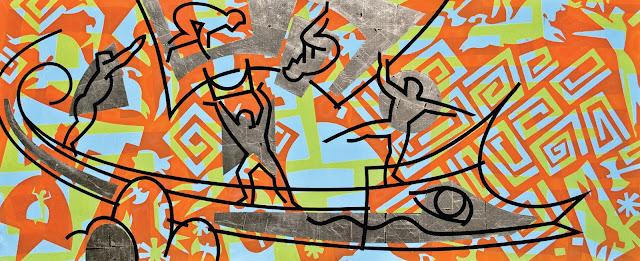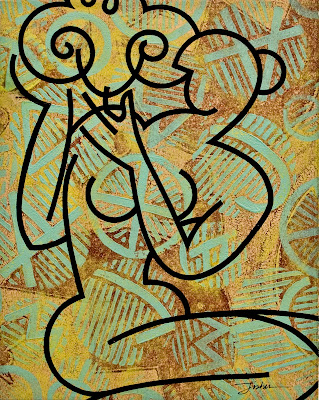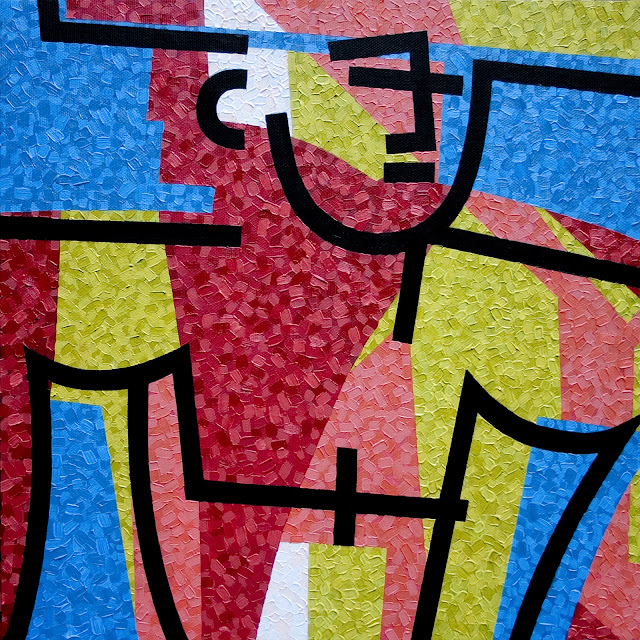Io and Argus, Monotype, 7.5 x 7.5 in. In my previous blog about the ship and ship builder Argo I referred to one of Hera’s symbols or totems, the Peacock. This blog is about my Monotype Io and Argus and one of my favorite stories in Greek myth. Zeus the father, or Zeus the philanderer, depending on your point of view, undeniably loved women (we will leave Ganymede for another blog). His conquests, be they goddess or mortal, populated Olympus and the Heavens with demigods, nymphs and heroes. Io, was one of his loves. She was a princes of Argos, and priestess of Hera. It was perhaps in that capacity that Zeus first saw lovely Io, wooed and pursued her. In order to deceive his, justifiably jealous wife, Goddess Hera, Zeus cloaked the earth and his liaison with Io in clouds. The clouds however only served to rouse Hera’s suspicion and through the Cumulus, Cirrus and Stratus she descended to find Zeus standing next to a lovely white... heifer. Guilty Zeus, sensing Hera’






